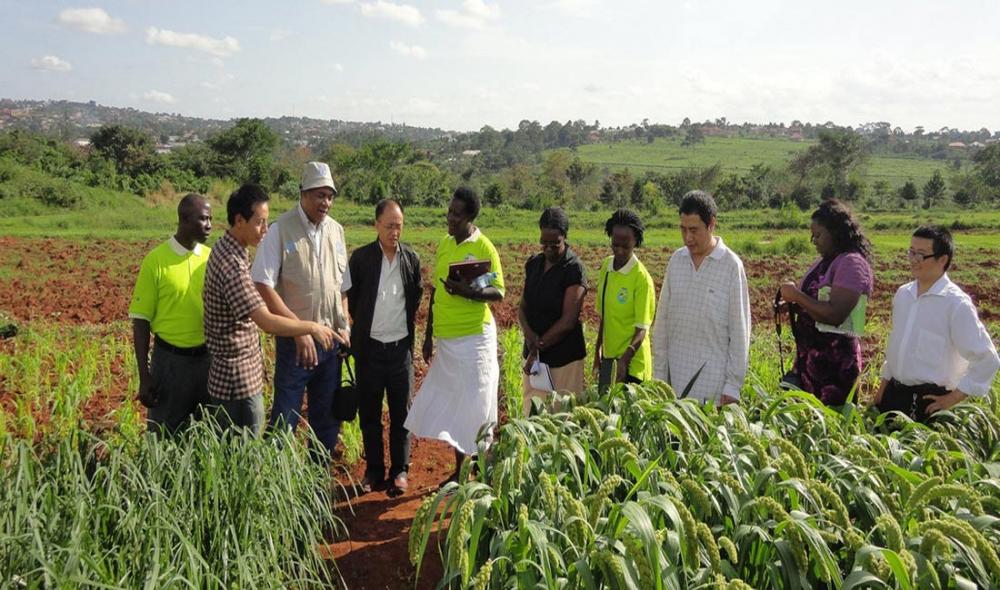Just Earth News | @JustEarthNews | 13 Sep 2018

FAO/Alessandro Stelzer
New York, As part of the 40th anniversary of the International Day for South-South Cooperation, the United Nations drew together on Wednesday, more than 100 best-practices developed in the countries of the Global South, which embody the 17 Sustainable Development Goals (SDGs) and 2030 Agenda for Sustainable Development.
“Today, the United Nations Office for South-South Cooperation – in collaboration with Member States, UN agencies and other development partners – is launching a compilation of ‘Good Practices,” together with “Triangular Cooperation, for Sustainable Development,’” said UN Deputy Secretary-General Amina Mohammed on behalf of the Secretary-General at a commemorative event in New York.
She showcased works-in-progress, including an ecosystem-based approach for managing freshwater resources, in six small island developing States.
“The transfer of technologies and vast inter-regional infrastructure investments are facilitating access to international markets for medium and small-scale enterprises,” she stated. “However, we are all keenly aware that there is more to be done to fully leverage the potential of South-South collaboration and partnership.”
In the late 1970s, the Global South embarked on a knowledge-sharing collaboration featuring economic, political, environmental, social and technical know-how, that formally became the Buenos Aires Plan of Action for Promoting and Implementing Technical Cooperation among Developing Countries (BAPA) – a blueprint for South-South cooperation.
According to Mohammed that “marked the beginning of a new phase of cooperation.”
“Driven by a spirit of solidarity, respect for national sovereignty and equal partnership, BAPA embodied the developing world’s desire to promote the sharing of homegrown solutions as a complement to North-South cooperation in fostering international cooperation for development,” she elaborated.
Since that landmark agreement, there has been a surge in South-South and triangular cooperation, with developing countries becoming key actors in implementing the 2030 Agenda.
Furthermore, over the last decade, greater trade between developing countries has driven an increase in world trade and new multilateral institutions devoted to South-South cooperation.
The deputy UN chief pointed out that in a few months, Member States would meet again in Buenos Aires for the Second High-level Conference on South-South Cooperation, BAPA+40, to review four decades of trends, and to launch an inclusive South-South and triangular strategy to implement the 2030 Agenda.
“I encourage us all to actively participate in the BAPA+40 preparatory process,” she said. “And I invite you to participate in the Global South-South Development Expo here in New York from 28 to 30 November.”
In concluding, she encouraged all to “reaffirm our commitment to this invaluable means of achieving sustainable development and improving the lives of billions of people in the Global South and beyond.”
A cornerstone for sustainable development
At the same time, a commemorative event in Thailand called for deepening cooperation to foster sustainable development in countries across Asia and the Pacific.
Jointly organized by the UN Economic and Social Commission for Asia and the Pacific (ESCAP), UN Office for South-South Cooperation (UNOSSC), and Thailand’s Ministry of Foreign Affairs, the high-level gathering highlighted that South-South and triangular cooperation must be a corner stone to collectively implementat the 2030 Agenda in the region.
"Asia Pacific is now the world’s largest trading region, sitting at the heart of global value chains and international investment, and at the forefront of technological innovation," said Kaveh Zahedi, ESCAP Deputy Executive Secretary. "Expertise which, deployed intelligently, could improve competitiveness, reduce inequality and make globalization fairer - more sustainable."
In a video message, Jorge Chediek, UNOSSC Director stressed that BAPA has provided a strong mandate to implement South-South Cooperation as a key instrument to achieve the globally agreed goals.
“The Asia-Pacific region has been a birthplace and model for South-South Cooperation,” said Mr. Chediek. “We are confident that this region will continue to make contributions to the new global agenda with renewed commitment to South-South Cooperation.”